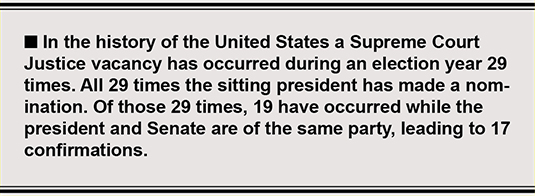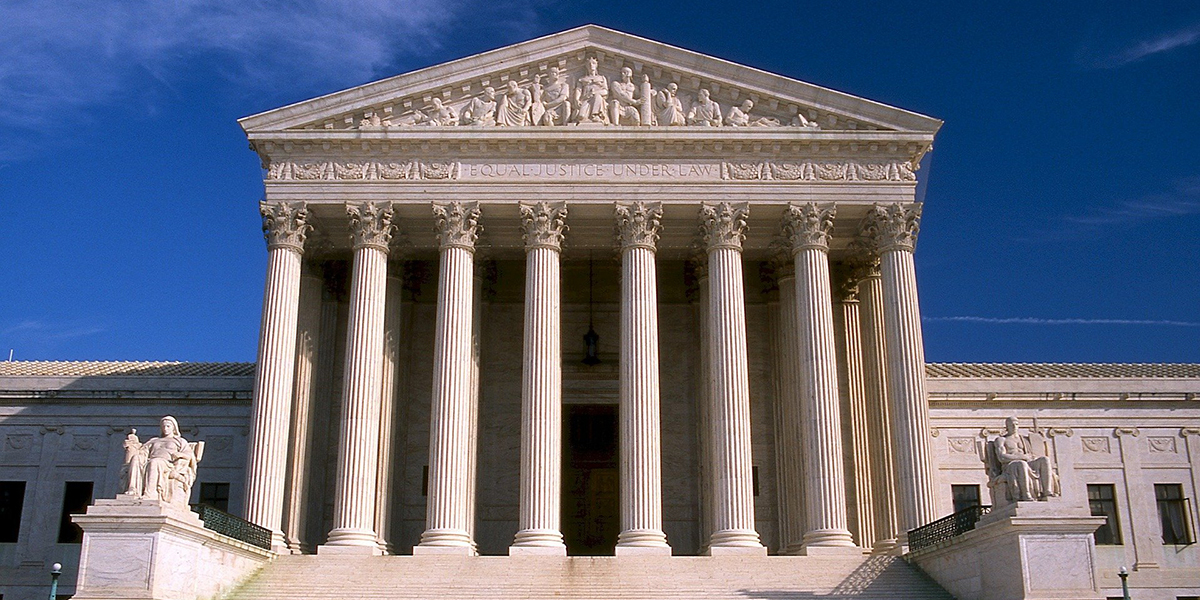Since the passing of Supreme Court Justice Ruth Bader Ginsburg on Sept. 18, 2020, much has been made of the possibility of President Trump nominating and having a new justice confirmed before the upcoming election. This unexpected Supreme Court vacancy has heightened tensions between the two political parties in what is already a volatile election cycle.
___________________________________________________
The United States Supreme Court is the highest court in the land, ruling on cases of the constitutionality of laws, the enforcement of these laws, and the possible encroachment of people’s rights. The court first met in 1790 and was created as an equal branch of government to both the legislative and executive branches, an intricate member of the checks and balances system that the founders created. The court can rule laws and actions taken by the other two branches unconstitutional and the executive and legislative branch combine to appoint and confirm the judges. It is these particular actions — the appointment of a judge by the president and the confirmation of said judge by the Senate — that are currently under the scrutiny of the American people. On Sept. 18, 2020, long-time Supreme Court Justice Ruth Bader Ginsburg passed away at the age of 87 from complications of metastatic pancreatic cancer. When Ginsburg was appointed to the Supreme Court by President Bill Clinton in 1993, she was only the second woman to serve as a justice on the court. Known for her strongly held liberal views of the law and her many vigorous dissents to decisions, Ginsburg’s passionate work in the court garnered her the nickname, “The Notorious R.B.G.” With the passing of Ginsburg comes a vacancy on the Supreme Court, a situation that is normally met with an appointment by the current president, but this situation is a bit different than normal. President Trump has already made his decision, nominating Amy Coney Barrett, a judge from the Seventh Circuit Court of Appeals, who has endured a week’s worth of grilling from members of the Senate Judiciary Committee. A question has arisen in both the halls of Congress and among the American populace: Should the Senate vote to confirm her, or wait until after the Nov. 3 elections? There are a few mitigating factors that have brought about this question. First off, the election is less than three weeks away. The question of whether or not a president should make a Supreme Court decision when he himself might be voted out of office is on the front of everybody’s mind. Should the Senate wait until the election is over to gauge which presidential candidate the country wants to appoint the new justice or does the current president have the right and responsibility to fill the seat? Another aspect causing friction with the decision is that a very similar situation happened at the end of President Barack Obama’s time in office. Former Justice Antonin Scalia passed away in 2016 leaving an empty seat during an election year. President Obama nominated Judge Merrick Garland to fill the vacancy, but the Senate decided not to vote on Garland, instead waiting until after the election, eventually confirming Trump-nominated Neil Gorsuch. A popular opinion on the current case is that it should just work out like it did in 2016, but the differences between the two situations must be taken into account when examining the present question. In 2016, the reason the Senate provided for not voting on Garland has become known as the “McConnell Rule,” named after Senate Majority Leader Mitch McConnell. This “rule” is often stated as the Senate should not vote on a Supreme Court appointment during an election year, but it is not that simple. The official reasoning is that during an election year where the president and Senate are of different parties, then the Senate is under no responsibility to vote on the nominated judge. In 2016 the Senate was controlled by Republicans and the president was a Democrat, so the Senate did nothing unconstitutional by allowing the nomination to expire while waiting for the next election. In the situation today, the president is a Republican and the Senate is still Republican controlled, and they would be doing nothing unconstitutional by confirming Judge Barrett. In fact there is considerable historical precedent for both circumstances. In the history of the United States a Supreme Court Justice vacancy has occurred during an election year 29 times. All 29 times the sitting president has made a nomination. Of those 29 times, 19 have occurred while the president and Senate are of the same party, leading to 17 confirmations. This seems to put the historical precedent firmly in the camp of voting to confirm Judge Barrett, but the precedent doesn’t end there. Of the other 10 nominations, when the presidency and Senate were controlled by different parties, only two were confirmed. This statistic also backs up the actions taken by the Senate in 2016, in fact those actions are now part of that statistic. While not everyone might agree with the decisions that were made in the Senate in both 2016 and now, there is no way to argue the actions are unconstitutional, and in fact they are actually backed up by historical precedent in both cases. At this stage the appointment of a Republican-nominated judge by a Republican-controlled Senate is all but assured, but it is important to realize how the history of similar situations has played out while considering the current complex conditions the Senate is facing.
